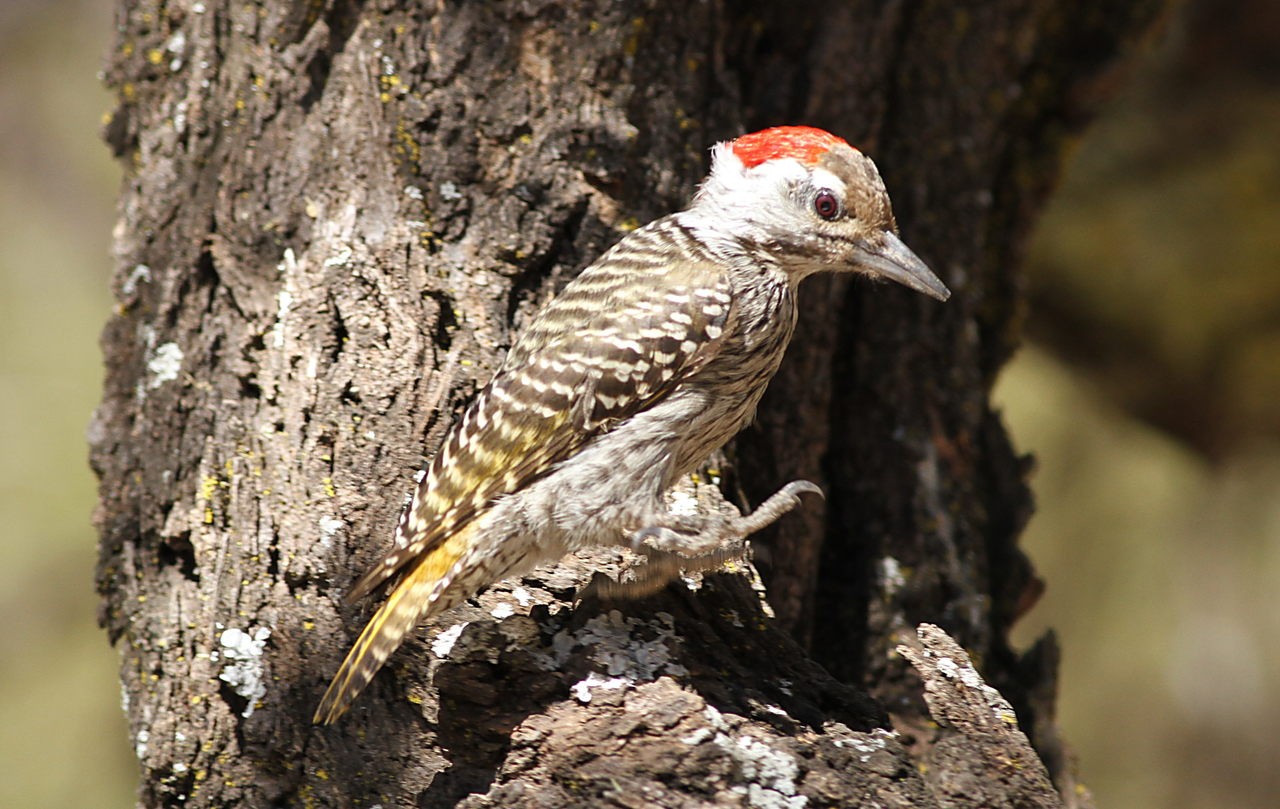Cardinal Woodpecker
A species of Dendropicos Scientific name : Dendropicos fuscescens Genus : Dendropicos
Cardinal Woodpecker, A species of Dendropicos
Botanical name: Dendropicos fuscescens
Genus: Dendropicos
Content
Description General Info
Description
Like other woodpeckers, this species has a straight pointed bill, a stiff tail to provide support against tree trunks, and zygodactyl or “yoked" feet, with two toes pointing forward, and two backward. The long tongue can be darted forward to capture insects. This bird measures 14 to 15 cm (5.5 to 5.9 in) from bill tip to tail tip, and its body shape is typical of a woodpecker. Its back plumage is dull olive in colour, and is marked with paler dots and bands. The underparts are white, heavily streaked with black, and the rump plumage is tawny. The white throat and face are separated by a conspicuous black malar stripe, and the fore crown is olive brown. As with other woodpeckers, the head pattern varies with age and sex. The male has a red hind crown and nape, the female has a dark hind crown and black nape. Juvenile males have a red hind crown and black nape. The small crest is raised when the bird is excited. 
Size
16 cm
Nest Placement
Cavity
Habitat
The Cardinal woodpecker is native to tropical parts of western and central Africa. Its range includes Angola, Benin, Botswana, Burkina Faso, Burundi, Cameroon, Central African Republic, Chad, Congo, Democratic Republic of Congo, Djibouti, Eritrea, Ethiopia, Gabon, Gambia, Ghana, Guinea, Guinea-Bissau, Ivory Coast, Kenya, Lesotho, Malawi, Mali, Mauritania, Mozambique, Namibia, Nigeria, Rwanda, Senegal, Sierra Leone, Somalia, South Africa, South Sudan, Sudan, Swaziland, Tanzania, Togo, Uganda, Zambia and Zimbabwe. It is found in a wide range of habitats from dense forest to thorn bush. The species has an extremely wide range and is common in much of this range. No particular threats have been recognised and the IUCN has rated its conservation status as being of "least concern". 
Dite type
Insectivorous
General Info
Feeding Habits
Bird food type
Behavior
The cardinal woodpecker often occurs in small family groups or may join small mixed flocks. Forages mainly in the lower storeys of trees and among shrubs and vines, on maize stalks and reeds. Pecks rapidly and probes dense vegetation, clambering along and hanging from small twigs. Like other woodpeckers, this species is an insectivore. It is frequently seen, and regularly drums softly. The call is a high-pitched krrrek-krrrek-krrrek. It nests in a tree hole, unlined apart from wood chippings. 
Species Status
Not globally threatened.
